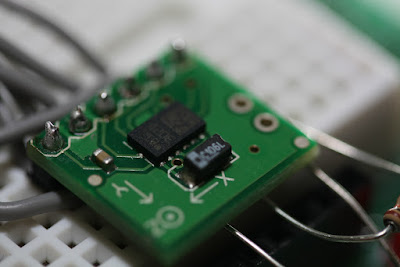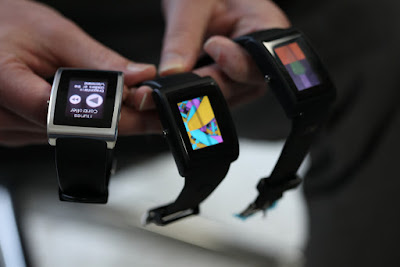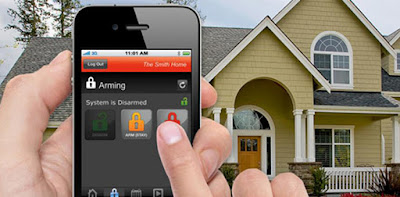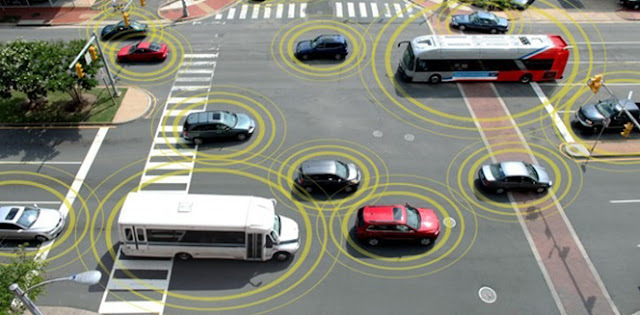Read More On This Report
Wednesday, 20 July 2016
Sensors in Consumer Electronics Market Research and Industry Trends
Read More On This Report
Monday, 18 July 2016
Smart Home Security Solutions Offers More Than Just Securing Your Assets
Sudden rise in thefts worldwide is driving the home security industry globally. Asian countries are observing an exponential growth.
We never
know when a bugler strikes
So what are market players upto
Courtesy:
#homesecurity
Click here to read report on Home Security Solutions Market :
What’s driving the home security
solutions market?
Approximately
65% thieves or buglers use force to enter a house and gain access to the
valuables. Furthermore, surprisingly over 25% enter the houses through windows or
unlocked doors. Many homeowners are exploring the functions and advantages of
wireless home security solutions market nowadays. That’s because over 20% of
the thieves were reported cutting the alarm wires before they entered the
house.
As per the
FBI, the dollar loss due to burglary in the United States alone is close to
$2,185. Besides this, Bureau of Justice Statistics Special Report reveals that
about 28% of the home owners were present when the buglers entered the house.
Home security
solutions market prospect
Today the home security solutions market consists of the
security services, mechanical security as well as electromechanical solutions.
The value of the security industry is believed to be over $ 249 billion. The
segment in which major brands such as Robert Bosch GmbH, Control4 Corporation,
Allegion PLC, and others are active accounts for over 12% of the total
industry. The private residential category accounts for approximately 25%.
Home security
solutions market sales across regions
North America is known for investing about twice as much on
In addition, the technology paradigm is shifting from
mechanical to advanced electromechanical. The smart locking category is
significantly growing in the residential segment. The sales of home security
solutions in South Korea have been boosted by the presence of prominent brands
in the country. A wide range of home security solutions such as video security
systems was launched in the United States, United Kingdom, Scandinavia, and
Australia last year. But the lock industry still looks fragmented, worldwide.
The home security solutions market across different nations is highly consolidated
as many companies are family–owned.
Rise of DIY Home
Security Solution Industry
Today, there are many DIY
options available in the market that can save the home owners up but
One of the most popular home security product Second
Watch what DIY home security products can offer
Competitive
landscape of the home security solution market
The market place especially
Home security gets
better with technology advancements
Where most customers
buy their home security solution?
Home security products are out there, but unfortunately
most customers are unaware of where to purchase these from. Approximately, 30%
of the United States customers know where to purchase the smart home solutions
or services from. This figure has often raised concern among the product
developers. Customers have an access to several award-winning home smart
Friday, 15 July 2016
Future Of World Smart Transportation Market
The epoch of the smart vendors venture
The smart
transportation market experience
Remember those long ticketing queues, and those hours of
wait before you could get to know the availability status alone? A couple of
decades ago, automatic fare collection and ticket vending machines was route for supervision adds arrives
in the picture, the smart transportation industry exhibits immense future scope
for getting even smarter.
Read market research reports on Smart Transportation Market at: https://www.alliedmarketresearch.com/smart-transportation-market
 |
| pixabay.com |
Smart transportation
market: Need of the hour
An extraordinary degree of technological advancements has
been incorporated in the transport segment over previous decade Global smart
transportation market current population transport
Right after the European Union (EU) declared its directives
binding the European operations within a legal framework, entire global smart
transportation market took the hint. It adapted accordingly, supporting the
idea of a more efficient network that functions within a cleaner and safer
environment. Objective smart transportation market
Thursday, 14 July 2016
Sensors in Consumer Electronics That Improve Security and Enhance Overall Interactive Experience
Consumer electronics are electronic equipment used in day-to-day
life, such as flat screen TVs, smart phones, personal computers, laptops, and
others. Sensors play a crucial role in efficient operation of these devices.
Increasing demand of customers for superior quality, slim design, high energy
efficiency, and other features have enforced manufacturers to incorporate
sensors in consumer electronic devices. Various sensors, such as temperature
sensor , speed sensor, electronic sensors, and others have been installed inside
laptops, smartphones, game consoles, and other devices to provide enriching
experience and convenience to users.
 |
| https://www.flickr.com/photos/randomskk/3282729421 |
Various sensors in smartphones :
There are various
sensors used in smartphones that provide ease-of-use and security to users.
The most basic sensor used in smartphone is accelerometer , which determines the
orientation of device among three axes and rotates screen in portrait or
landscape mode. Gyroscope also provides information about orientation, but with
more precision than accelerometer. Few high-end devices have barometer , a
sensor that measures atmospheric pressure and determines the distance above sea
level, which in turn, results in enhanced GPS accuracy. A light sensor measures
the brightness of ambient light and adjusts the brightness of display . A
proximity sensor, which is placed at the earpiece of a phone, sends information
to system that user is attending a call and display screen is turned off by
system to save energy.
Get access to detailed report at:https://www.alliedmarketresearch.com/sensors-in-consumer-electronics-products-market
Apple’s technology
and acquisition of patents:
Touch ID
on iPhone and iPad enables users to unlock devices with their fingerprints.
A user places finger on Home Button and a sensor residing underneath that
button determines whether fingerprint matches with stored data. Home Button is
made up of sapphire crystal that protects sensor and acts as a lens. Sensor
used in Touch ID scans the details of fingerprint with precision and creates a
mathematical representation. Then, it compares this representation with stored
data to identify the match and unlock the device. In this way, sensors can be
used in consumer electronics for security purposes.
Apple
has acquired 26 out of 31 original patents of Privaris, a biometric
technology firm. These patents are related to fingerprint and touchscreen technology.
The acquisition of patents aims to improve Touch ID on iPhone and iPad. Apple
is planning to eliminate physical Home Button and introduce a virtual Home
Button by creating a multi-touch display with the help of integrated
fingerprint technology. As per the reports from CNN, one of the patents
acquired from Privaris enable users to use fingerprint technology and
touchscreen at the same time. A fingerprint scanner residing beneath the screen
can scan the finger through phone’s display. In this way, Apple will be able to
create an iPhone with an edge-to-edge screen. Furthermore, Apple uses biometric
sensors for authentication to authorize credit card payments using its Apple
Pay service.
Wednesday, 13 July 2016
'Smart' Devices At Home May Be Vulnerable To Hackers
 |
Cyber security expert Etay Maor warns about the changing threats of cyber criminals.
Photo: Toh Ee Ming
|
SINGAPORE — When cyber-security expert Etay Maor tested a hacking tool in his home, he was surprised to discover 16 household appliances trying to connect to his Internet. Upon expanding the range to the nearby vicinity, it easily picked up more than 100 devices in the neighbourhood , from Bluetooth devices to fitness trackers, all connected to the Internet.
Innocuous as they may seem, these “smart” appliances could give cyber-criminals a playground to wreak havoc by taking control of your devices, or eventually provide a gateway into stealing personal information in your home system.
Mr Maor, 37, who is IBM Security’s executive adviser and who was in Singapore for a conference earlier this week, warned that with people being increasingly plugged in to smart devices, tech-savvy hackers could move beyond laptops and mobiles to infiltrate their networks.
“With companies offering more (services) like online banking, and with the Internet of Things, there’s going to be (greater) threats and attack vectors for criminals,” he told TODAY.
Earlier this month, the Cyber Security Agency here reported that Singapore was a “prime target” for cyber-criminals, with 16 waves of online attacks hitting the Republic’s shores since April last year. This comes even as there is an outcry over the move to disallow Internet surfing on civil servants’ work computers that are used to access the Government’s internal networks.
 |
| https://blog.digicert.com/smart-home-security-2016/ |
Attacks may come in many forms, ranging from “overlay attacks” which replicate applications such as banking apps, to malware that records videos of users’ screens, Mr Maor said.
While the malware used is still largely the same, what has changed is how readily tools are available online, and cyber-criminals may get them “for sale or rent within seconds”, he added.
Attacks are also increasingly being customised to local contexts, where criminals design malware using the local language, or conduct intelligence operations to suss out how companies work.
Now, even ordinary individuals without specialised skills may band together to form a “collaborative and supportive community” to create sophisticated attacks. Remaining anonymous, they exchange tips freely, seek advice in underground forums, and rate each other’s skills , said Mr Maor.
Increasingly, these shady figures are going beyond targeting financial institutes to stealing personal data or records from healthcare organisations and insurance firms, he added.
Tuesday, 12 July 2016
Teen Girls Getting The Coolest Wearable Out There
JEWELBOTS are bracelets with programmable plastic flowers made for middle-school girls. They’re also the most interesting wearable which is seen this year.
Their creators describe them as “friendships bracelets that teach girls to code.” Compared to a gleaming Apple Watch or even an entry-level Fitbit, the Jewelbot hardware is primitive: a semi-translucent plastic flower charm that slides onto a hair tie–like elastic bracelet. The functionality is basic, too. The charms talk to each other over Bluetooth, and using a Jewelbots smartphone app, youngsters can program their charms to vibrate or light up when their friends are nearby. But despite their apparent simplicity, Jewelbots exhibit some truly fresh thinking about wearable technology. And with a little imagination, they hint at devices far more interesting than today’s computer watches.
The idea took shape over several years. The group started by looking at products like MySpace and Minecraft that had successfully enticed kids to dabble in code. “We kind of wanted to reverse engineer that,” Chipps says. These examples were reassuring. They proved that if kids are genuinely interested in an outcome or effect—building a unique Minecraft structure, say, or tricking out their Myspace profiles—they won’t shy away from code as a means to achieve it.
Monday, 11 July 2016
Wearable Products Innovative Side That Make Lives Better
Wearable device
manufacturers are seen expanding their reach to change how many carry out their
day to-day chores.

https://www.flickr.com/photos/scobleizer/5455106314

Wearable
electronic products that are found useful by medical practitioners and other
sectors are proliferating among consumers worldwide. Aspiring wearable
designers and intelligent component manufacturers are finally benefitting from
the wearable technology market say researchers at the Allied
Market Research (AMR). Furthermore, information technology, security companies
as well as third party enterprises including
Industry experts eyeing
the size and share and demands in the sector emphasize that increasing
consolidation, especially in the hardware segment will presage a higher
emphasis on the development of wearable software. Besides this, the tech stocks
are expected to be the robust performers in the low progressive and low
inflation industry environment . According to industry experts at AMR, the
wearable electronics industry is valued at $25.19 billion by 2020. Furthermore,
this sector is anticipated to register a CAGR of 26% from 2014 to 2020.
Moreover, the corresponding volume of the wearable electronics market would be
about 142.6 million units, growing at a CAGR of 23% from 2014 to 2020.
Watch
which wearable technology market players caught attention in 2016
Future wearable technology market
The wearable technology
market is witnessing a significant growth worldwide, especially in the United
States. If we are to believe the figures presented by officials at the Fidelity
International the global shipment of the wearable products for the 1st quarter in
the last year had reached approximately 11.4 million units, which was an
increase of 200% compared to the stats in 2014. Of those 11.4 million about 7
million alone were advanced fitness bands, a segment which is anticipated to
fuel the future growth of the wearable technology market. Researchers reveal
that the development of these wearable products will continue and potentially
overshadow both smartphones as well as the tablet in the next five to six
years. ears .
For the wearable
technology market to continue its growth, product designers will have to become
more proficient and combine analytics, big data as well as cloud storage to
deliver important insights to the customers at the right time. Besides this,
gadgets will be designed by considering the user’s requirements. This process
is termed as the human – centered design. Once made possible, the wearable
products can soon emerge as an important part of our everyday life. The most
significant wearable investment opportunities made so far are in data security,
hardware, software, and others.
Wearable
technology market is definitely making winds
Courtesy: PwC 2014 survey
What is the future of healthcare wearables?
The wearables in the
healthcare indus try are definitely one of the big futures. Change is happening
in the healthcare, said - Erik Jacobson, working with Accenture at the
“IOTSWC15” event. One of the key enablers of the wearable technology in the
healthcare sector is the customer expectations. The economic model that works
both in the government systems and private systems. e.g. in the UK, the GP is
getting high financial contr ol over their trade or business; large B2B
agreements between healthcare institutions and payers around operations etc. is
fueling the growth of wearable products in the he althcare sector.
Another focus area is
value-based health, where a customer doesn’t just want to pay for the products
but also for the end results. Wearables
in healthcare can be considered as an endpoint of
technology such as a smartphone. When we talk about wearables many will instantly
think of a pair of smart glasses or probably a smart watch. But what’s next?
Fitness bands are the obvious ones. The fitness market is incredibly mature
attending to an array of fitness concerns. Next are the identity bands and the
smart clothing or connected clothing which is the next stage of wearables.
Smart wireless necklace wearable music device:Necksound
Necksound is a necklace shaped high quality audio system with a modern and sporty design. Listen to your music while doing sport!
It is a necklace-shaped audio device made with hypoallergenic silicone, with a modern and sporty design that provides top quality sound. Listen to music or talk on the phone while doing any type of physical activity without the need for headphones. Necksound is the perfect wearable to enjoy your private soundscape without being isolated from the world that surrounds you.

Unlike other conventional headphones and hands-free devices, Necksound offers a different, safer and functional alternative. It’s the only device of its kind that combines all essential features.
Friday, 8 July 2016
Digital Signage Hits The Road To Save Lives
Digital signage is taking a turn for the safety lane in an innovative new concept that would see semi trucks providing a heads-up on oncoming traffic to following drivers.
Display technology from Samsung recently was used in a prototype "Safety Truck" aimed at preventing traffic accidents and fatalities from drivers trying to overtake and pass semitractor
Have you ever found yourself driving behind a semitrailer truck? If you're on a single-lane highway or road, it can be a nightmare. Even though the truck is driving relatively slowly, you cannot overtake it due to its size, and because you cannot see what is happening in front of the truck.
However, Samsung has developed a solution that may make this problem a thing of the past.
How does it work?
The Safety Truck consists of a wireless camera attached to the front of the truck, which is connected to a video wall made out of four exterior monitors located on the back of the truck. The monitors
This allows drivers to have a better view when deciding whether it is safe to overtake. Another advantage of the Safety Truck is that it may reduce the risk of accidents caused by sudden braking or animals crossing the road.
Samsung led the prototype development by providing large format display samples, and conducted a test with a local B2B client
Monday, 4 July 2016
Smart Transportation Ideas Reshaping Your Life
Surge Pricing for Parking Meters
Cheap downtown parking in Philly is both popular and insidious: The glut of circling drivers searching for $2-an -hour street spots means slower traffic, more road rage and worse air quality. The Parking Authority should take a page from the Uber playbook — as San Francisco and Pittsburgh have — and bump prices substantially, to around $7 for prime spots at peak times. This would change the supply/demand dynamic, leading to more open spaces. “Prices should be low enough not to discourage people who are coming in to go to a restaurant or shop, but high enough to discourage people from feeding the meter all day,” offers Rina Cutler, senior director at Amtrak and Michael Nutter’s former deputy mayor for transportation. For those all-day parkers? Off-street parking (a.k.a. garages and lots) with set half-day and day rates will take on a whole new luster.
Labels:
Allied Market Research,
Electronics,
Guidance System,
Intelligent Transport System,
ITS,
Parking Management,
Parking meters,
Semiconductor,
Smart Transportation,
transportation system
Location:
United States
Subscribe to:
Comments (Atom)










